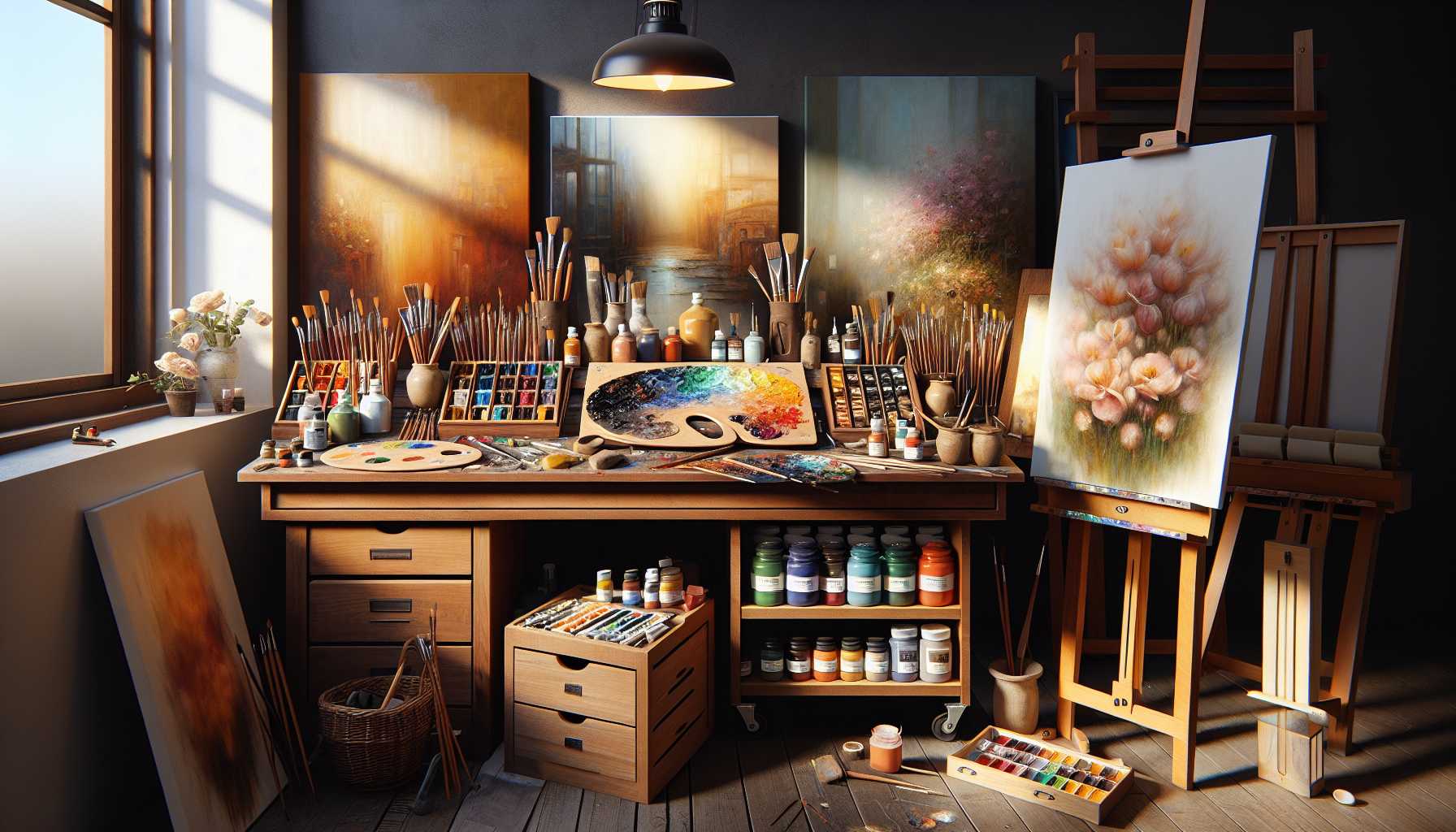Ever found yourself lost in an art store, unsure about which kind of paint to buy? Don’t worry – I’ve been there too. So, let’s dive into the complex world of popular paint types together using words we both understand.
The Nitty-Gritty of Paint Types
Just like us humans, each paint type has its own distinctive characters. Having a clear understanding of these differences, whether you’re a novice or an accomplished artist, will guide you in picking the ideal paint type for your artistic endeavors.
Oil Paints: An Oldie but Goodie
- Allows ample time for blending due to slow drying
- Capable of creating bold, luxurious hues
- Ideal for intricate designs and layering
- While slightly high-maintenance (requires special cleaning agents)
- Excellent for traditional portraits and scenic beauty
Here’s a tip: If patient painting and rich, eye-catching colors are up your alley, oil paints might just be your perfect match!
Acrylic Paints: The All-Rounder
- Quick to dry – faster than you can utter the word “masterpiece.”
- Works well on nearly any surface
- Simple to clean just using water
- Cost-effective and a fantastic choice for beginners
- Brilliant for striking, modern designs
Fun Fact: Acrylics are the jack-of-all-trades in the paint world. They’re an ideal choice for those who wish to explore and experiment!
Watercolors: The Delicate Gem
- Creates gorgeous translucent effects
- Light and easily transportable
- Excellent for creating soft color transitions
- Can be somewhat unpredictable yet exciting
- Ideal for nature-inspired art and delicate creations
Remember: Working with watercolors is similar to dancing in the rain – they might not always behave as expected, but that’s exactly where their charm lies!
Picking What’s Right for You
Reflect on these questions:
* How much time can you dedicate to painting?
* What does your budget look like?
* Are you comfortable with the cleanup process?
* What kind of effects are you hoping to achieve?
Beginner’s Guidelines
- Get started with student-grade materials
- Explore online tutorials – they’re invaluable resources!
- Join local art communities for practical advice
- Don’t hesitate to mix and match
Storing and Caring for Your Paints
- Store oil paints in a dry, cool spot
- Make sure acrylic paint lids are tightly closed to avoid drying out
- Keep watercolors away from high humidity conditions
- Always clean brushes thoroughly post-use
Always remember, there’s no superior paint type – the best one is simply the one that aligns perfectly with your creative vision. Each paint type holds its own unique charm, waiting for you to unveil it!
Has anyone tried any of these paint types before? Please share your experiences and create a community where we can all learn from each other! 🎨
*[This article was lovingly curated for beginners and seasoned artists alike who wish to delve into the diverse world of paint mediums.]
